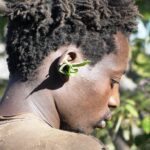Spotted hyenas (Crocuta crocuta) occur throughout sub-Saharan Africa. Exceptions are Central and West African rainforests, Southern grassland biomes, and further beyond the south. The density of a hyena population in a suitable habitat depends significantly on the density of the lion population. About 75% of hyena deaths are caused by lion kills. The more lions, the less hyenas. And vice versa. If the lion population declines, hyenas (and leopards) will become Apex predators in these areas.
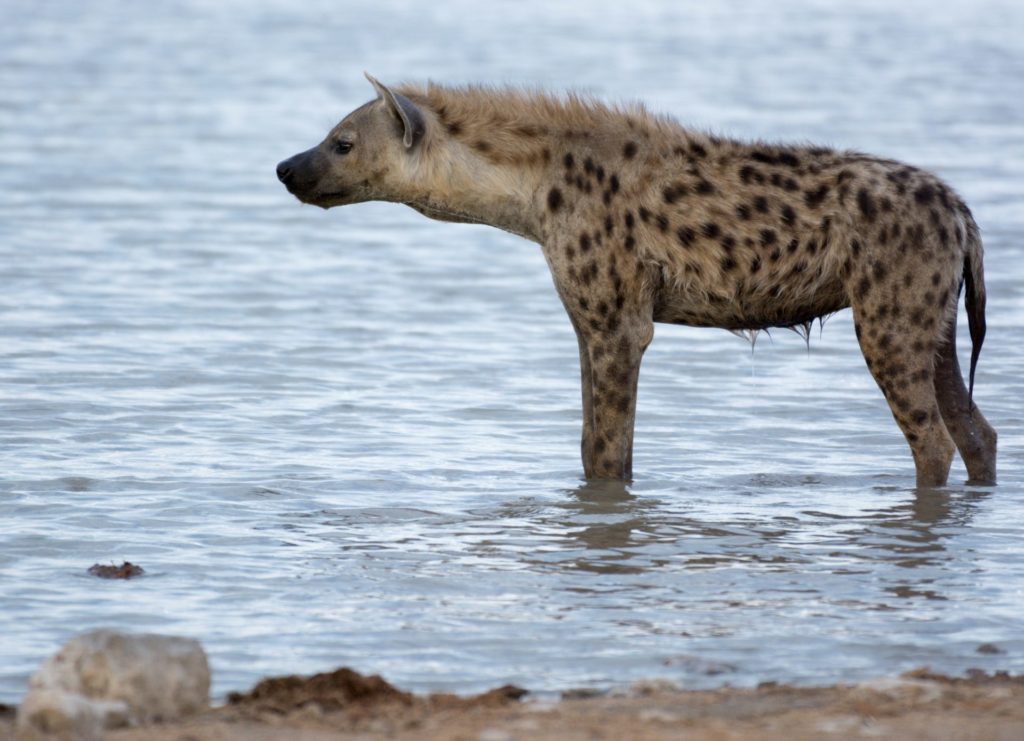
Hunting tactics of hyenas
Against common belief, about 70% of a hyena’s diet will be actively hunted. Due to their strong front legs and weaker hind legs, they can keep up a high speed over long distances. Thus, they can outrun most of their prey, metabolically geared for only short sprints. Their main prey is in the 100 kg range, which includes Wildebeest, Zebra, and Kudus, but it depends on the area. Wildebeest, for example, is caught on average after a 60 km/h chase at around 5 km from starting.
Spotted hyenas depend primarily on sight and sound for hunting. They can hear feeding noises on a carcass from a distance of up to 10 km. They do not depend as much on smell. They actively watch vultures and their behavior for finding carcasses.
Active hunting of hyenas
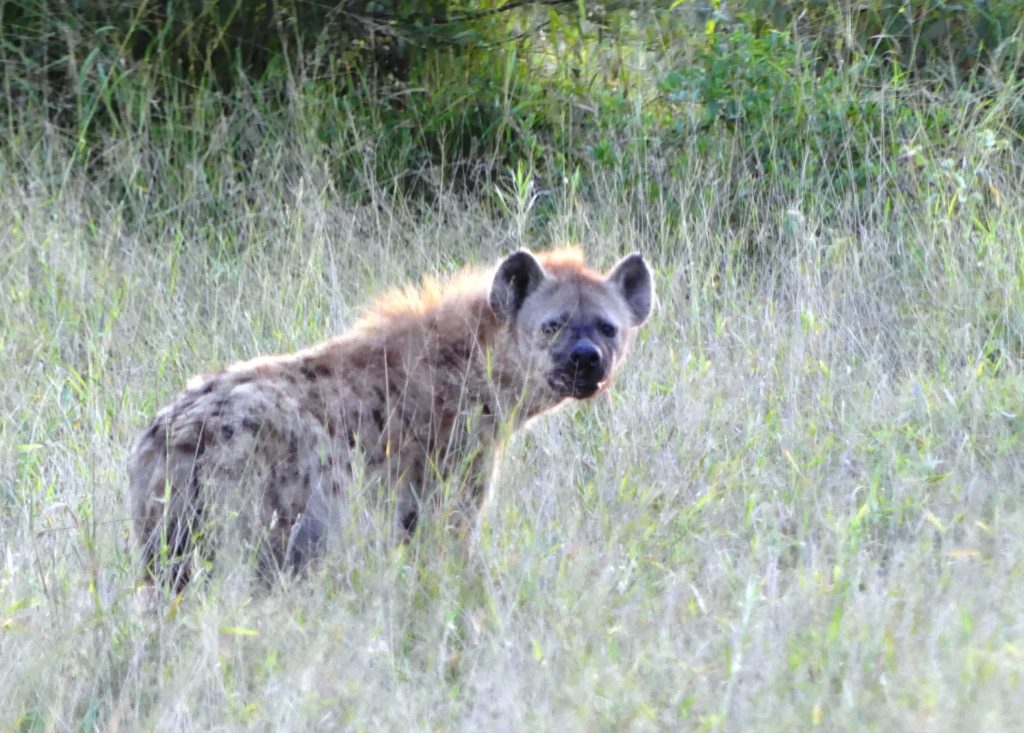
When hunting actively, it is impressive to see how cleverly clan members work together. One of them will be observing the whole area. Others are lying in ambush positions further apart. Some are systematically combing an area and flushing out the game. Other individuals are driving this game towards the ambush sites. No words or shouting are needed. Everything happens in dead silence and functions like clockwork. Seeing how organized a pack of hyenas organizes itself and hunts is incredible.
.
The danger of habituated hyenas

Outside of National Parks, hyenas are often getting habituated to humans. Mainly, inhabitants of weekend homes in the bush, game lodges, or kraals frequently start intentionally feeding hyenas. Others throw away food leftovers. Hyenas sneak around and visit these sites often. The problem is that hyenas will get used to specific ways humans act towards them (habituation). In case somebody acts outside this scenario, aggression can occur. The hyena’s aggression will intensify the stranger this person acts and the weaker this person appears to the animal.
When are humans getting attacked by hyenas?
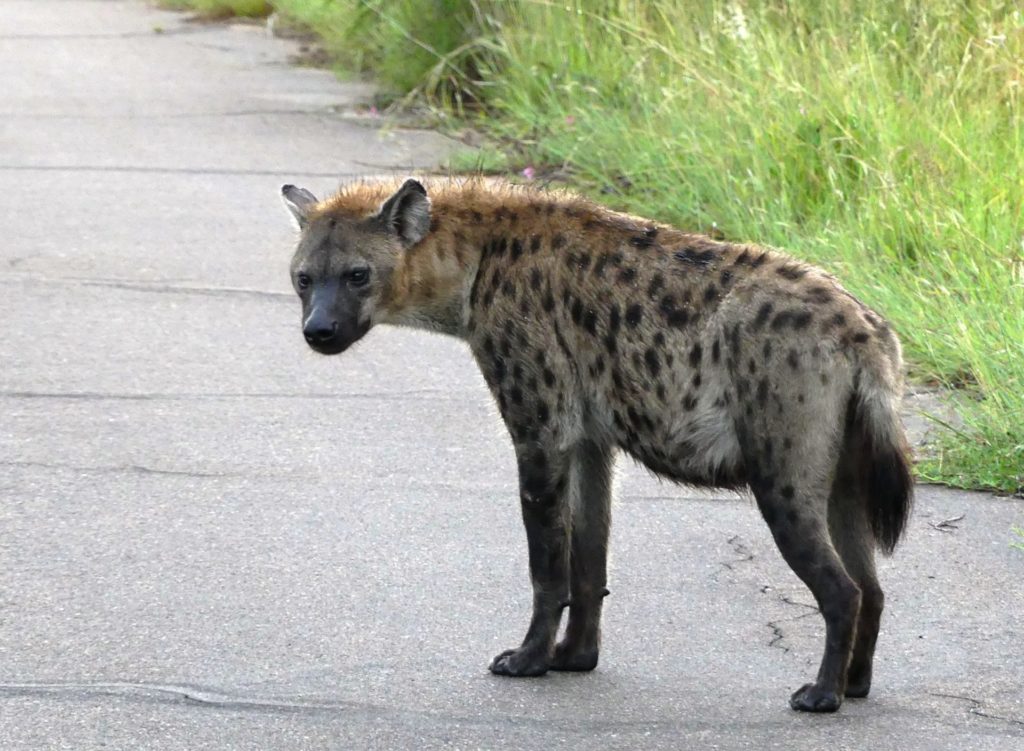
Hyena attacks on humans are not rare. A WWF report in 2004 reported 52 hyena attacks on humans for 12 months in Mozambique, of which 35 were fatal. The remaining 17 others either lost their scalp or half a face or suffered bitten hands or feet. Most attacks occurred in September. At this time, it is warm enough to sleep outside, and bushfires drove off the game, so hyenas were hungry. Generally, it can be seen from reports that the majority of attacks happen to people sleeping outside in the bush.
Precautions for warding off hyena attacks

If somebody wants to sleep in the open in the bush, special precautions must be taken against hyenas. If there are lions, a massive thorn ring (‘Kraal’) around the sleeping area is necessary. Such a kraal should be at least 1,5 m high.
Head under thornbush
The bare minimum for sleeping out in the bush is to put the head area under a massive thornbush. This could be either Buffalo thorn, Black monkey thorn, Flackythorn, or similar others. It is of paramount importance to protect the head from getting bitten during sleep.
Personal gear at the foot area
In addition, it is necessary to lay out a pile of personal gear with human scent. This could be a backpack, for example. That gear should be situated one meter down the foot area towards the open. This should be an initial attraction for hyenas and give us time to react.
Primitive weapons
As a third line of defense, it is necessary to hold some primitive weapons handy. At least two fist-sized stones should be kept nearby. And a long stout stick, into which a hyena can bite and be kept away from our body. With a throwing stick, a blow to the hyena’s muzzle area could be delivered when biting into the stick. Such a throwstick is called Kerrie in Southern Africa, and more information can be found here.
These three requirements are the minimum for danger reduction if sleeping alone outside in the African bush. If possible, a thorn ring should be built around the sleeping area, which improves safety significantly. Against common belief, lighting a fire is not always a good idea. A fire attracts hyenas because many people associate fires with leftover food and throw away bones. They are, therefore, not afraid of fire anymore.
The second person on guard duty to spot hyenas early
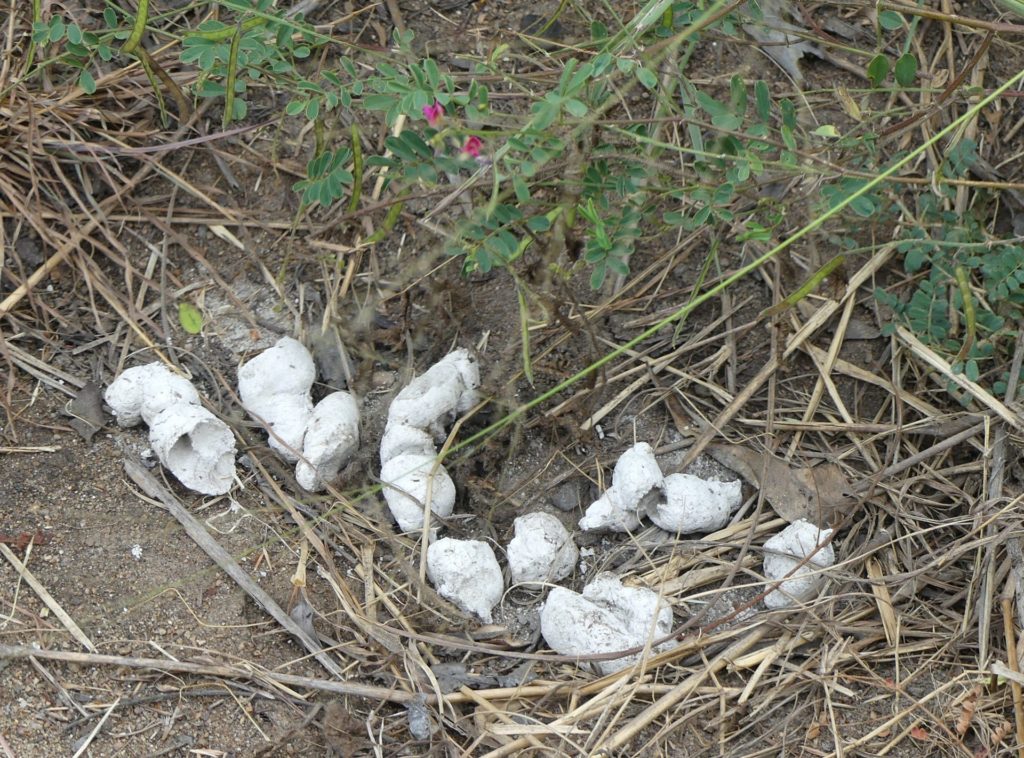
However, the best protection is a second person who will help build a kraal. Thereafter, one should light a fire to embolden oneself. One person should always stand guard, whereas the second person (or other persons) can sleep. The person standing guard should check with a flashlight regularly all around the bush. If he sees the two green shiny eyes of a hyena, it is time to get up and start shouting. This helps in areas where hyenas are not habituated to humans.
If they are habituated, the situation can get dicey. Hyenas will look for food that was either thrown away or is looking for food remaining in the fire or ashes. In this case, shouting and throwing stones will only help temporarily. Often, they want to get to the fire and are coming back again and again from the most invisible angles. Only constant vigilance, shouting, and throwing stones can keep them at bay. The stronger the defending person appears, the more likely hyenas will push off and find a more leisurely meal.
Lessons learned about Spotted Hyenas.
- Spotted hyenas are a real danger when sleeping in the open in the African bush.
- A thorn kraal around the sleeping area will provide protection
- One person should always stay on guard, and the other person(s) can sleep
- Collecting a pile of throwing stones before dark is a good idea
- Acting loud and strong towards hyenas is of paramount importance
Further readings about Dangerous Game in Southern Africa on this website:
African buffaloes are dangerous
Lion behavior – so different by day and night
Recipe for disaster – elephant bulls in musth
Spotted beauties: Leopards in Southern Africa
Danger posed by Nile crocodiles
Why are Hippos dangerous on land?
.



